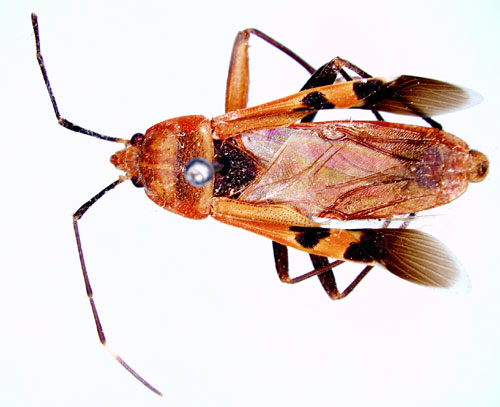Notes on Australian species of Physopelta Amyot & Serville, 1843 (Heteroptera: Largidae: Physopeltinae)
by @lehelind for iNaturalist, Feb 2022
Summary
Misidentification of Australian species in the genus Physopelta is common in iNaturalist, mostly caused by a peer-reviewed but erroneous publication regarding the distributions of two subspecies. This article aims at clarifying the presence of Physopelta in Australia and enabling quick identification by providing information on known distributions and comparative imaginery of specimens from entomological collections. A key to the Australian species of Physopelta is given.
Australian Largidae
Four species of Largidae have been recorded from Australia, represented by three genera of the subfamily Physopeltinae: Delacampius Distant (1 species), Taeuberella Schmidt (1 species) and Physopelta Amyot & Serville (2 species) [Cassis & Gross 2002, Stehlík 2008, Stehlík 2013].
Australian species of Physopelta
Two species of the genus Physopelta were recorded from Australia, P. gutta and P. australis, both belonging to the subgenus Neophysopelta [Stehlík 2013].
Physopelta australis Blöte, 1933 is endemic to Australia [Voigt 2006] and occurs in tropical Queensland, the Northern Territory and Western Australia.
Physopelta gutta (Burmeister, 1834) is a widespread species with a distribution embracing the southern and eastern Palearctic (extending westward as far as Afghanistan, eastward to China, the Korean Peninsula and Japan), the eastern Paleotropic and Australia. P. gutta is variable in shape and coloration and thus separated into two geographic subspecies: The nominotypical P. gutta gutta is found throughout the mentioned distribution exluding Australasia, where it is replaced by P. gutta famelica, resctricted to New Guinea with adjacent islands and Australia.
NOTE
Distributional records of P. gutta gutta from Australia and Australian Region seem erroneous and belong to P. gutta famelica. Voigt (2006) overlooked that previous works gave the overall range of P. gutta, while data on the distribution of the subspecies were given separately in these works. Thus P. gutta is represented only by P. gutta famelica in Australia [Kerzhner 2001, Stehlík 2007, Stehlík 2013]. See detailed Australian localities below.Known distributions of species and subspecies of Physopelta in Australia
[Stehlík 2013]
Physopelta (Neophysopelta) gutta (Burmeister, 1834)
Physopelta (Neophysopelta) gutta gutta (Burmeister, 1834)
Distribution: not present in AustraliaPhysopelta (Neophysopelta) gutta famelica (Stål, 1855)
Distribution: NT (N Gulf) , QLD (N gulf, NE coastal, SE, S), VIC (NE), NSW (SE coastal) – QLD: N Mareeba, Julatten, Karama Range, Darlingston, rain forest; SE, Mt. Maroon; S, Broadwater Lagoon, ca. 35 km S Dalby.
Physopelta (Neophysopelta) australis Blöte, 1933
Distribution: NT (N coastal, N Gulf), QLD (N Gulf, NE coastal), WA (N coastal) – NT: Port Darwin; Mary river, 100 km W of Jabiru; Stapleton; 70 km SW of Mataranka; Nitmiluk N.P., Edit Falls; Victoria Road, 110 km to Kununnura; 25 km SE of Katherine, near Cutta Cutta Caves – WA: Kununnura (campground); Ord river, 105 krn N of Hall’s Creek; Ord river, by Ivanhoe; Fitzroy Crossing, 400 km W of Halls Creek; 2 km East of Karratha
Key to Australian species of Physopelta Amyot & Serville
- Body oval; scutellum and clavus almost unicolorous dark grayish brown (Fig. 1 A, B)
P. australis Blöte - Body slender, costal margins of the corium almost parallel; scutellum dark grayish brown, contrasting with the clavus; clavus usually reddish, sometimes diffusely darkened, but never concolorous (Fig. 2)
P. gutta famelica (Stål)
A |
B |
 |
.jpg) |
Fig. 1 Physopelta australis Blöte, 1933. Specimens from collections (A) G. Cassis, 2012, University of New South Wales. (B) K. T. Richards, 1961, Wyndham, WA, Western Australian Department of Agriculture.
A |
B |
 |
 |
Fig. 2 Physopelta gutta (Burmeister, 1834). (A) P. gutta famelica, C. Stål, 1863, Typus, Swedish Museum of Natural History, (A) P. gutta gutta, adapted from J Souma et al. 2021, male and female.




